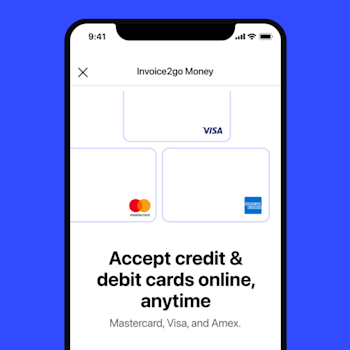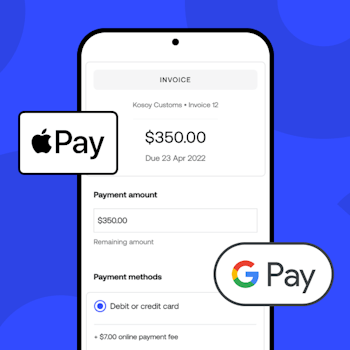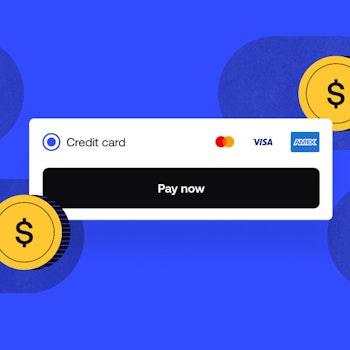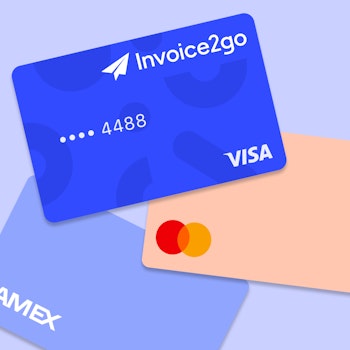
How to grow your self-employed business with Facebook – Part 2
Setting up your Facebook Business Page is just the first step. Now it’s time to use it. Here’s an easy-to-follow guide to using Facebook to land new projects and consistent work.
Don’t just push out ads – engage with your customers.
For decades, the traditional way to advertise was called push advertising. Meaning, you developed an ad and then had it run in print, or on radio or TV. It was entirely one-way – you pushed out your ad in hopes that a small percentage would respond. It seems very basic – and it was. But times have changed. Audiences today have many more choices as to what they read, listen to watch. Their attention spans are limited to a few eye-catching seconds.
There is an upside to this new era. As push advertising fades, there are now exciting, new opportunities to not only engage audiences but to target individuals – those who may be more likely to become your customers. One of the best places to engage people on Facebook.
Think beyond traditional ads.
Besides having your phone ring with calls from new clients, your goal on Facebook is to grow the number of people who follow your business and have them regularly look at what you place online. Your Facebook Business Page is the one location where everything you’ve posted (placed) on Facebook is collected – your comments, promotions, events, photos, and videos.
Post away.
When someone posts something on their personal Facebook page it almost always has something to do with their personal life; their recent vacation, toddler, pet, dinner out – the list is endless. But when it comes to your Facebook Business Page, you should carefully plan to regularly post things about your company; recent projects, industry events, and other information that might pique your customers’ interest.
Here are some ideas to help get started and stay on track:
1. Develop a content calendar
While there are many excellent apps out there that can help you schedule what and when you’re posting on Facebook, using a basic Outlook or Google calendar works perfectly fine to get you started. Content is nothing more than the information you’re posting on your Facebook Business Page. We’ll cover what that content can be in the next few paragraphs. For now, use this calendar to remind you to regularly post content on your Facebook Business Page. Simply place reminders weekly, bi-weekly or monthly – just as you would place any reminder or meeting on your calendar.
Posting something weekly is a good first step. As you think of new ideas and content to post, you’ll build momentum. Keep your posts to about two to three a week with a variety of different content.
To help you fill up your content calendar and brainstorm ideas, let’s look at some content ideas that typically drive engagement. And remember, this is all free to post.
2. Host contests and giveaways
Developing a contest or giveaway has huge benefits when trying to generate a large audience for your business – right away. As a small business or self-employed business of one, it’s up to you to determine what a customer might win or what you’re giving away – a percentage off, discounted materials, free estimates, etc. The key here is to create a post that will attract people to your site. Putting a great photo of your crew in action and adding a link to your company’s website will help.
The two most important things you should ask readers to do are:
- Click “Like” to your post. This isn’t just a popularity contest with business pages. The more people “liking” your post will slowly adjust Facebook’s algorithms so that more people with similar interests will see it. This is the beginning of your community.
- Send you their email. This goal is two-fold. You’ll need their email to contact them, should they win. Do this by including your email so they can reply. This is also a fantastic way to start building a robust email list that you can use for marketing purposes later.
3. Post videos
As people have less and less time to read, video content is rapidly growing. Videos are now the most shared content across almost all social media. And today, all you need is a smartphone to start recording and posting on your Facebook Business Page. It’s best to brainstorm ideas for your videos ahead of time. For example, showing a completed project with a testimonial from your happy customer.
4. Use question-based posts
While it doesn’t come off as overly promotional, throwing out a question to the Facebook universe is a great way to build a sense of community – as well as starting to engage with a potential customer by going back-and-forth with them. Don’t be shy either. Allow them to sound off or engage in a friendly debate. Supporting or validating their responses and providing insights into what you do as a construction and outdoor business professional will slowly build your credibility. And whether it’s now or down the road, they’ll most likely reach out to you with their construction or outdoor projects when the time comes.
5. Post photos
Photos can tell a story just as much as words. From completed projects to inspiration images to industry meet-ups, if you have good images then you should post them to your Facebook Business Page. Use a great photo to add interest to your posts involving contests, videos or probing questions. Also, note that Facebook allows for easy cross-posting from Instagram if you have an Instagram business account.
6. Use Facebook Stories
Stories-based content is a fun way to encourage followers to see your business’s day-to-day happenings. As you build your stories, keep a close eye on how well they are received. This will help you to share more of what customers like – and not post what they seem to be ignoring.
Create a group (not just a page) for your business
Book clubs, industry meetups, fitness groups, knitting guilds – they’re all groups of people with similar interests and pursuits. And the “groups” feature on Facebook is just the same – they just meet online. The goal of your Facebook group should be the same as your regular Facebook posts: to attract and engage followers and potential customers.
Here’s how to create a group on Facebook:
1. At the top of your Facebook Business Page, click on the word Create. This will give you a pull-down menu – select Group
This will open a window where you can give your group a name, add people, and set the group’s privacy level. You’ll need to add at least one person to your group before you can create it. Choose someone you know (someone in your company) – but who will keep it under wraps until you’re ready to launch. In terms of privacy level, make sure your group is public so everyone can see it.
After you choose your privacy settings, click Create and your new group will be ready to customize.
2. Customize your new group with images that will attract people as well as show something about your business
Facebook makes setting up a group easy and intuitive, add descriptions to tags, locations, website links, and email settings.
Keep the same rules in mind as when you first created your Facebook Business Page. Meaning, certain images that are important to you (e.g., of last summer’s company picnic) may not resonate well with potential customers. They may be more interested in pictures of your completed work, your crew working at a job site, and other images that would communicate performance and quality.
3. When your new group looks the way you want it – start posting!
Post an image with a caption describing it. Or a video. Or ask a question that may start a dialog with several new people. If you want to create a set of rules for readers to keep in mind, just add it to your description section.
Remember, it is important to read and comment on member questions and interactions with other members. You are not only responsible for the content that’s in your group – you’re also responsible for responding to comments promptly.
4. After you’ve added your first few posts, start inviting people to join your group
While friends and family are wonderful for support, they aren’t necessarily going to be future customers. Here are a few ideas to help attract regular followers and build your group:
- Put an invite to join your group on your company’s website homepage
- Send invites to your new email list, introducing your new group
- Share your new group on all the social media groups and platforms you’re already active on
- Include an invitation to join your group on any outgoing business emails or have it as part of all your employees’ email signatures
And remember, for all the ideas above, make sure to include the link to your Facebook group.
How to create an ad on Facebook.
The key difference between posting content on your Facebook Business Page or Group and running an ad is that an ad will cost money. How much depends on the size and scope you set for it. Since this is the primary way Facebook makes its money, they make it incredibly easy for you to create and run as many ads as you like.
For smaller businesses like yours, Facebook has something called Ads Manager (link to https://www.facebook.com/business/ads). It helps you create and maintain your Facebook ads. In just a few short steps, it walks you through things like determining your specific objective, choosing an audience, and setting your budget.
From there, Ads Manager will help you determine the look and size of your ad, what content you’d like it to include, and how and where it will be seen on Facebook. Don’t let this sound intimidating. Again, Facebook encourages businesses to place ads. And once you’ve created your first few, it will seem second nature.
Once your ad is out there for your audience to see, you’ll want to see how it’s doing. For this, you’ll want to look at Facebook Ad Manager. This is a single dashboard (web page) where you can see the results for all the Facebook ads you are currently running and how much you’re spending every day.
Being active and involved in social media doesn’t have to be daunting. You may find it one of the more enjoyable parts of your overall marketing campaign. Now might be the perfect time to get active on social media — slow periods of work, downtime, or rest breaks are a great time to jump into social media and keep your pages or groups going. Consider scheduling an hour of your day for digital marketing purposes and portioning part of that toward Facebook.
Related Articles

How to accept credit card payments on Invoice2go in 3 simple steps

Accept payments online via Apple Pay and Google Pay

Must-not-miss write-offs as you wrap up 2022 year-end finances

5 ways accepting credit and debit card payments helps your business stay resilient

4 easy ways to increase cash flow today

What is Small Business Saturday and why is it important?
The features and surprising benefits of a well-designed packing slip
